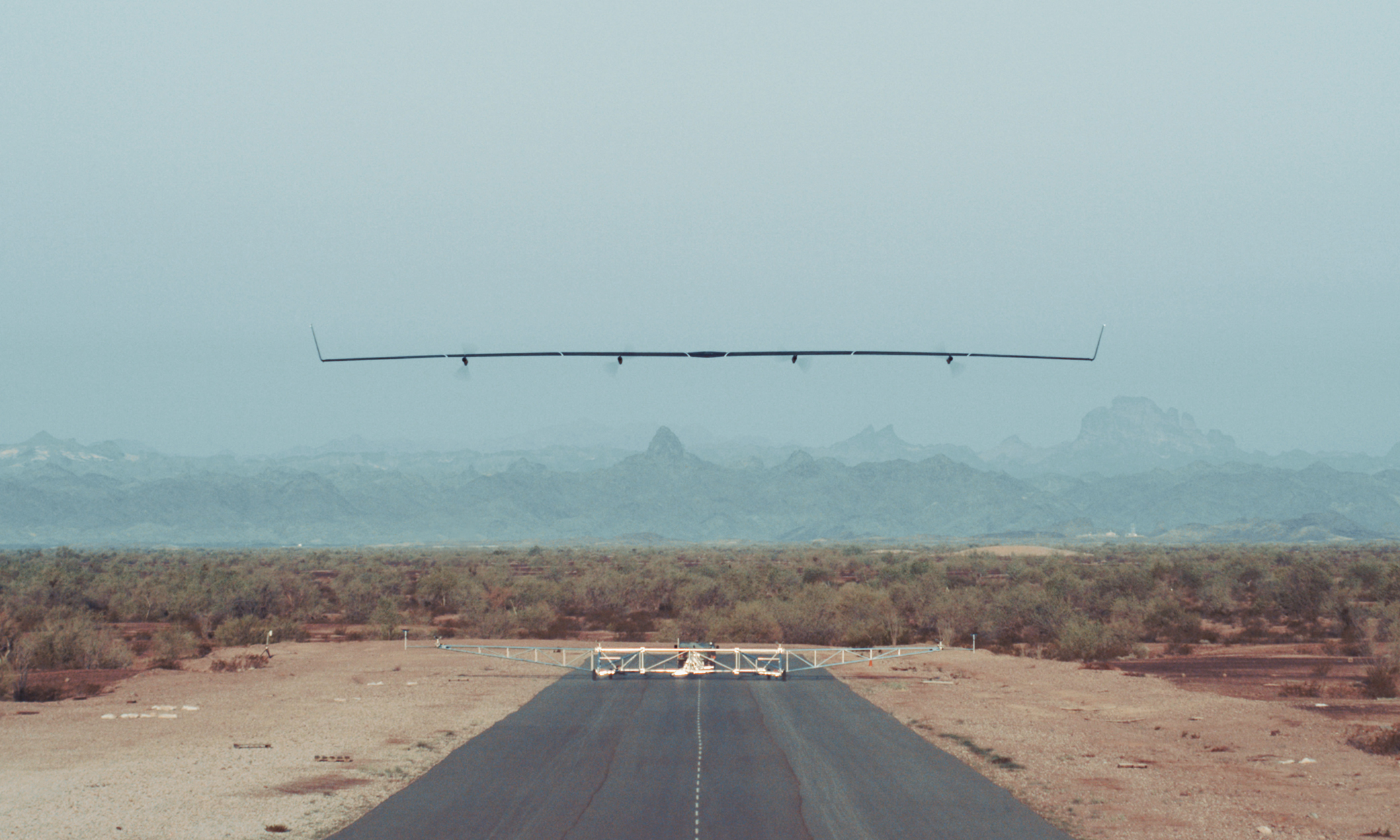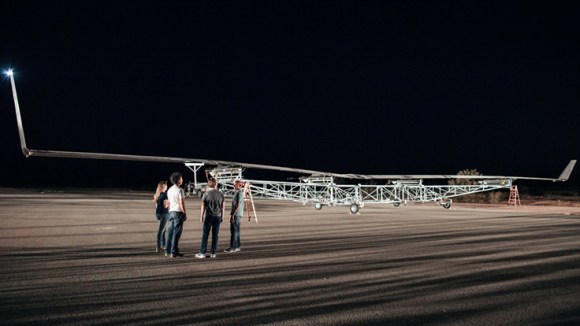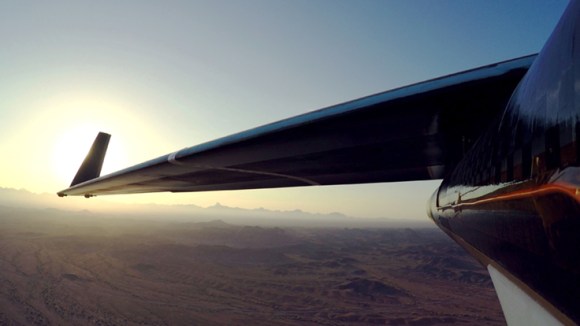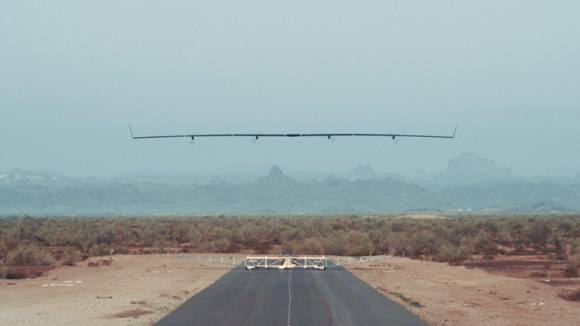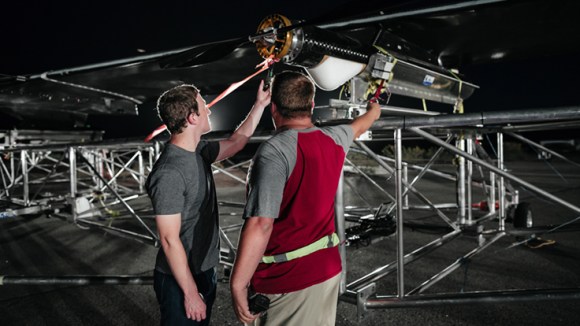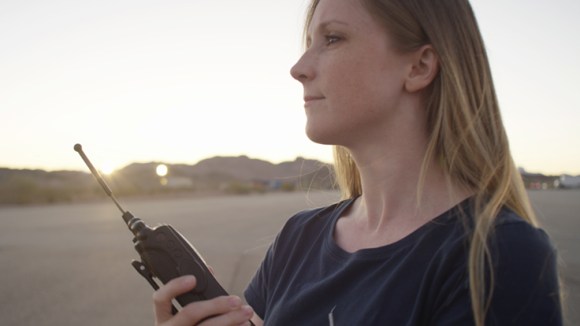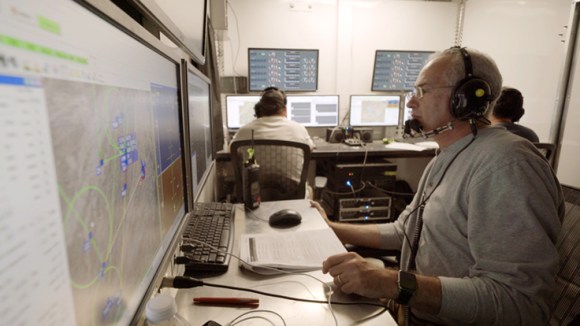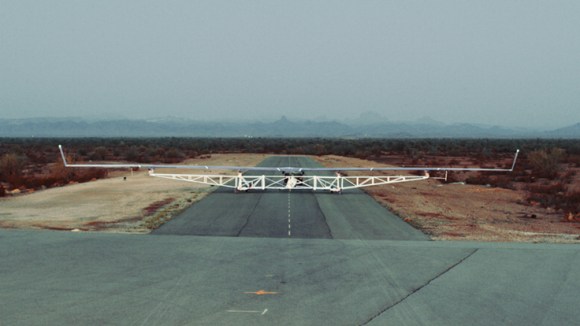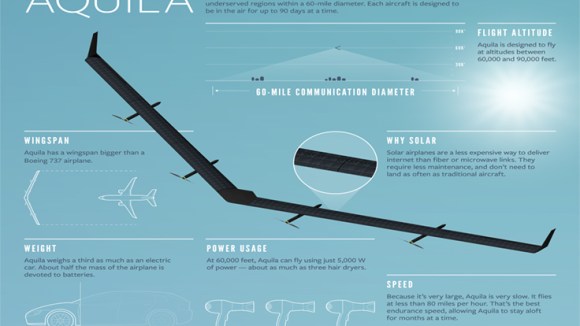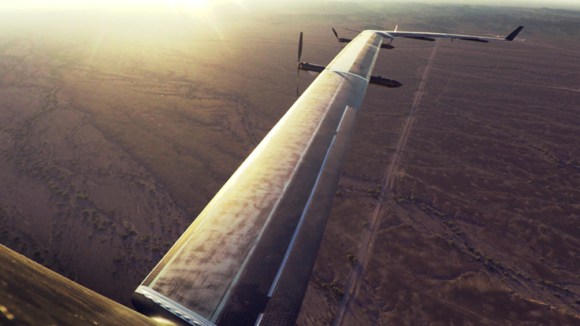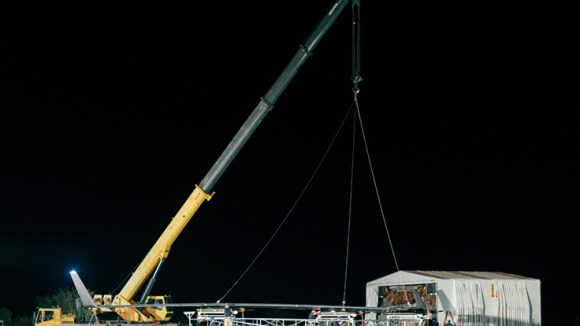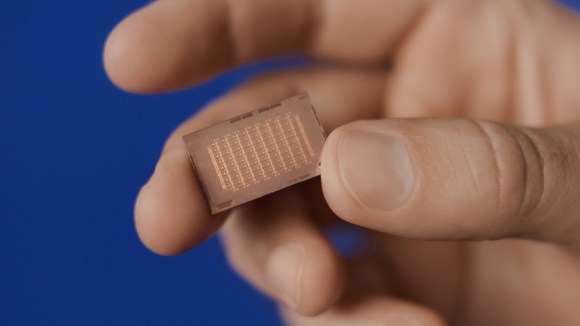Today 1.6 billion people live in regions that don’t have access to a mobile broadband network. Connecting these remote parts of the world with existing technologies such as buried optical fiber or microwave links on towers is often cost-prohibitive. As part of our commitment to Internet.org, the Facebook Connectivity Lab is developing many new technologies to bring affordable internet access to more people, more quickly. One of the technologies we are building is a fleet of solar-powered aircraft called Aquila. Once they are fully operational, these high-altitude planes will stay airborne for up to 90 days at a time and beam broadband coverage to a 60-mile-wide area on the ground, helping to open the opportunities of the internet to people in underconnected regions.
After several months of flying scale models, our team has reached an important milestone: We successfully completed the first full-scale test flight. The low-altitude test flight lasted for 96 minutes — more than three times our planned mission length — and provided our aeronautics team with data on numerous aspects of Aquila’s performance, including the autopilot, motors, batteries, radios, ground station, displays, basic aerodynamic handling, structural viability, and crew training. This post details some of our early learnings from the test flight and the data we collected, and looks ahead to some of the challenges we’re working on next.
Testing Aquila
All flight tests are intended to answer one question: How good were our models at predicting actual behavior? The flight test phase for our first full-scale aircraft started with a functional check flight designed to verify our mathematical models and overall aircraft structure. Here’s what we tested:
- Takeoff: Aquila’s design is optimized for minimal mass, so it does not include traditional takeoff and landing gear. The first part of our test involved orchestrating a new kind of takeoff. We attached the airplane to a dolly structure using four straps, then accelerated the dolly to takeoff speed. Once the autopilot sensed that the plane had reached the right speed, the straps were cut simultaneously by pyrotechnic cable cutters known as “squibs.” While the ground-based crew can command the plane’s heading, altitude, airspeed, and GPS-based route from a control computer, there are no joysticks involved — takeoff is on autopilot. A great deal of simulation and analysis were performed prior to first flight to understand the dynamics of takeoff and to choose the aircraft’s pitch on the dolly, the speed at which it would be released, and the initial elevon angle. The specifications based on our simulations resulted in a successful takeoff.
- Aerodynamic model: Aquila will need to operate in both cold, thin air at high altitude and warm, thick air at low altitude. The air is 10x more dense at sea level than at cruising altitude, and the aerodynamics of the plane’s wings and propellers vary greatly over that range. When designing the aircraft, we built computer models based on computational fluid dynamics that helped us understand how much power is required to propel the plane for the different altitudes and speeds at which it will operate. We then ran the model through thousands of tests, using different parameters, to ensure the plane would meet our performance, stability, and control requirements. We also performed a coarse verification of our drag model, which measures the force of air opposing the moving aircraft. Both the climb rate and the battery usage were close to the predicted values. We tested the autopilot and the aeroservoelastic model on which it is based when we flew our 1/5-scale aircraft earlier this year. Our initial analysis from the full-scale flight suggests our aerodynamic models are in line with what we observed.
- Battery and power performance: While Aquila’s power system will eventually include solar cells, our first few test aircraft are powered only by batteries to give us early indications about their aerodynamic performance, handling qualities, and autopilot performance, and to verify our structural models. Given the low drag and slow speed of 25 mph, Aquila flew on less than 2,000 W of power during its first flight. This matched well with our prediction, which suggests that the propeller efficiency, motor efficiency, and drag were also in line with predicted values.
- Autopilot performance model: Like many modern UAVs, Aquila is controlled by a full-time autopilot. To make our large, flexible aircraft controllable requires that we understand how the aircraft deforms under the aerodynamic and inertial loads, and what the structural modes and frequencies look like. Our first flight verified that the autopilot design is correct at low altitude and low true airspeed. During all maneuvers, the autopilot was stable and accurate, and it brought the aircraft to the commanded condition in the predicted amount of time. The automatic landing algorithm also performed well, tracking the glide path and centerline with expected accuracy.
- Real-world conditions: Our simulations and analysis predict how the aircraft will respond to wind, turbulence, and vertical gusts. Our first flight lasted three times longer than the minimum mission length, so we were able to gather data on how the structure and autopilot responded under a range of real-world conditions to help verify these predictions. We are still analyzing the results of the extended test, including a structural failure we experienced just before landing. We hope to share more details on this and other structural tests in the future. To prove out the full capacity of the design, we will continue to push the plane to its limits under more extreme conditions in a lengthy series of tests.
Challenges ahead
As we move toward the next phase of testing Aquila, we face a variety of unique challenges. Put simply, this has not been done before. Almost everything about Aquila — from remaining airborne for months at a time to transmitting wireless signal between other aircraft and the ground — will require continued advances in science, engineering, and design.
- Challenge #1 — Getting enough sun. For a solar-powered airplane to work, enough energy must be collected during daylight hours to operate for the full 24-hour day. The amount of energy the airplane requires to power its propulsion, payload, avionics, heaters, lights, communications, and other systems has to be less than or equal to what the solar panels can collect. At its nighttime altitude of 60,000 feet, Aquila will require approximately 5,000 W of power — about as much as three hair dryers. During the winter, the solar panels must be able to collect enough energy during the short days to keep the batteries charged over the long nights, up to 14 hours at a time.
- Challenge #2 — Batteries. Keeping the airplane aloft on a long winter night requires a lot of stored energy. Given current and projected battery performance, that means batteries will account for roughly half the mass of the airplane. The rest of Aquila’s mass consists of motors, payload, avionics, and structure. We’re pushing the edge of high energy-density batteries while exploring the best designs to ensure we have enough resilience in the system.
- Challenge #3 — Size and speed. Aquila has a wingspan comparable to a commercial airliner’s but weighs only one-third as much as a car. This ratio of weight to surface area means that Aquila is able to fly much slower than a typical airplane of the same size — about 25 mph at sea level, compared with 50 mph for a glider or more than 200 mph for a commercial airliner. Such stark differences challenge many of the assumptions relied upon in aeronautical engineering. There is little to no precedent to guide us as we continue to optimize Aquila’s performance.
- Challenge #4 — New cost paradigms. For Aquila to succeed, it needs to be an economically viable alternative to current network infrastructure. We need to develop more efficient onboard power and communication systems; ensure the aircraft are resilient to structural damage to reduce maintenance costs, and able to stay aloft for long periods of time to keep fleet numbers low; and minimize the amount of human supervision associated with their operation. We’re working with the industry on ways to accelerate the development of new technologies that can drastically change the economics of deploying internet infrastructure.
Over the course of the next several months, we’ll continue to study the data we obtained from this initial flight. As we conduct more test flights, we will add more aircraft to the test fleet, fly to higher altitudes, and explore both the high-speed regime — where the airframe’s flexibility becomes limiting — and the low-speed loiter regime, where the aircraft will eventually provide connectivity to the ground. We will add instrumentation to the aircraft to help us learn about the structural dynamics, stability and control derivatives, and the all-important aerodynamic efficiency. We’ll also experiment with different aircraft form factors, sizes, and weights as we learn more.
Stay tuned for more on this program as we dive deeper into the complex engineering challenges involved in building the interconnected systems of this aircraft.
